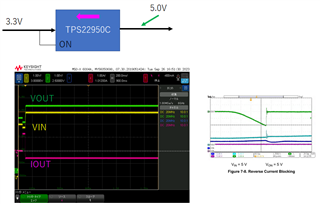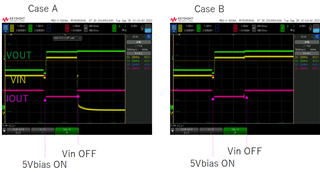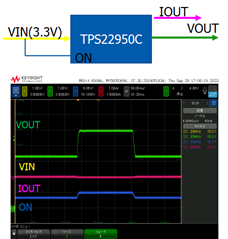Hi team,
I have two questions.
1. Does TPS22950C have a reverse current protection function?
I biased the OUT side to 5V while outputting 3.3V, but the reverse current continues to flow. It does not turn off like the data sheet.

2. Two patterns occur when VIN is turned off with the OUT side biased to 5V.
Case A: Vin drops to 0V
Case B: Vin rises to 5V
B occurs more frequently, but which is the expected behavior?

Best Regards,


